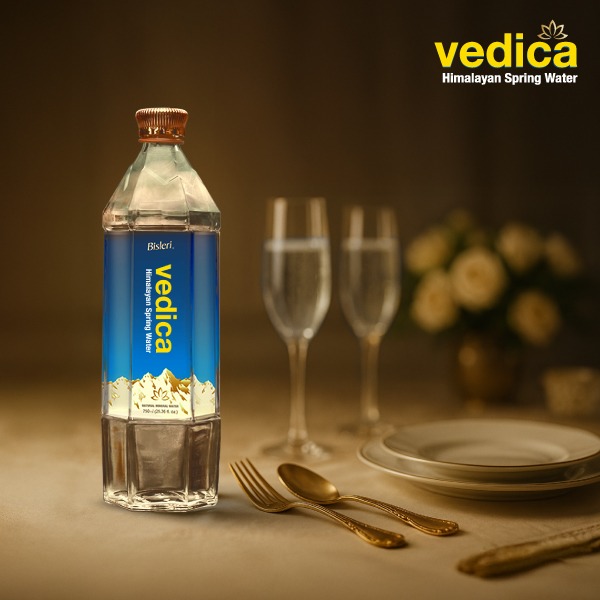As Chef Prateek Sadhu prepares to rejig the menu at Mumbai's popular fine-dine, Masque, he takes us on a journey of rediscovery to India's paradise on Earth, Kashmir, also the land of his birth.
Our latest foraging trip took us to Jammu & Kashmir. We’re scouring the Himalayas for ingredients we can bring back and reinvent at Masque. It’s here that we cherry pick our hero ingredients – heroes of the region and the menu, so to speak. I landed there in early December, barely dodging the thick winter. I was born in Kashmir, so here I was again looking at my roots from an altogether new perspective – and that only made it more special for me.
/https://elle.in/wp-content/uploads/2019/07/uploads/dji-0006-7-edit-edit.png)
We woke up at 4 am to reach the floating market at Dal Lake at the crack of dawn. It’s a local farmer’s market where they sell to each other, and crack small deals from their modest ‘kistis’ (boats). It was about 0°C and a thick mist had descended on the market that morning, which somehow didn’t get in the way of brisk business at all. There was a sense of order to the chaos.
/https://elle.in/wp-content/uploads/2019/07/uploads/img-6285-edit.png)
/https://elle.in/wp-content/uploads/2019/07/uploads/img-6279-edit.png)
Spending a quiet afternoon on Dal Lake, after our rushed morning.
/https://elle.in/wp-content/uploads/2019/07/uploads/img-5977-edit-1.png)
At Pahalwan’s, in Jammu, I got a closer look at the making of kalari – a kind of cheese that’s a lot like mozzarella, and made of full fat buffalo milk. Because of the low temperatures and the sharp winter sun, what you get is a cheese that’s moist on the inside but dry on the outside. It’s had pan-roasted with a bit of salt, or eaten like a chaat, grilled in its own fat with masalas. Their kalari kulchas are also very famous.
/https://elle.in/wp-content/uploads/2019/07/uploads/img-6113-1.png)
/https://elle.in/wp-content/uploads/2019/07/uploads/img-6116-edit-1.png)
Every self-respecting Kashmiri pounds their masalas with their own hand-crafted limestone mortar and pestle. I just got a new set at Pantha Chowk in Srinagar. Not as intimidating as the one pictured here, which I’m sure would need four hands to use.
/https://elle.in/wp-content/uploads/2019/07/uploads/img-6141-edit-1.png)
“The guy chiselling away at these mortars and pestles sat by himself in a shed, surrounded by limestones on all sides.”
/https://elle.in/wp-content/uploads/2019/07/uploads/img-6406-edit-1.png)
/https://elle.in/wp-content/uploads/2019/07/uploads/img-6412-edit.png)
Winter once meant it was time to cook with dehydrated vegetables – or hoekhsyun – but less so now. They’re almost a delicacy now, these sun-dried eggplants, turnips, ‘haakh’ (collard greens), water lilies and bottle gourds. (P.S: I used to hate ‘haakh’ growing up. Only many years later, with some distance, I was able to appreciate its low-key pungent taste.)
/https://elle.in/wp-content/uploads/2019/07/uploads/img-6181-edit-edit.png)
Fresh ‘haakh’ and lotus stems at the Habba Kadal market. Both are practically staples. In a typical Kashmiri wazwan meal, you’d find them braised with yoghurt, fennel and ginger powder.
/https://elle.in/wp-content/uploads/2019/07/uploads/img-6426-edit.png)
/https://elle.in/wp-content/uploads/2019/07/uploads/img-6420-edit.png)
I found close to a hundred varieties of pickles at Senoo Kashmiri Pickles, near Habba-Kadal in the old city. No wonder they call Haji Ghulam Kadir Senoo the Pickle King. He bottles some unusual ingredients, like pears, apricots, cherries, mutton, fish, and bitter gourds…anything you can imagine. (I plan to use some of them as part of our new menu in January, with our fish course, and with butter from Gulmarg.) This business was something Senoo turned to after the conflict in Kashmir began; after his thriving transportation business took a hit. It’s unfortunate that it will have no successor.
/https://elle.in/wp-content/uploads/2019/07/uploads/img-6606-edit-edit-1.png)
We stopped over at the Trout Hatchery, Laribal, where rainbow trout and brown trout are bred. The snow trout is indigenous to Kashmir, but these varieties were introduced to the region a little over a hundred years ago. About 10,000 trout eggs were sent from Scotland by the Duke of Bedford in 1899, which unfortunately didn’t survive the journey. But the second attempt in 1900 was successful. The fresh water fish here is sweet and not spongey like its European cousin. No traditional wazwan would be complete without a fish curry, or a ‘taileth gaad’ – fried fish with a Kashmiri spice mix.”
/https://elle.in/wp-content/uploads/2019/07/uploads/dji-0002-8-edit-edit.png)
This stunning view makes it so much harder to leave. But I’m back with pots of inspiration (plus, many kilos of Senoo’s pickles) and excited to rejig the menu as we do every other month at Masque.
Photos: Salamat Hussain
/elle-india/media/agency_attachments/2024/12/12/2024-12-12t050944592z-2024-11-18t092336231z-czebsydrcd4dzd67f1wr.webp)
/elle-india/media/agency_attachments/2024/12/12/2024-12-12t050944592z-2024-11-18t092336231z-czebsydrcd4dzd67f1wr.webp)
/elle-india/media/media_files/2025/10/03/eba-website-banner-2025-10-03-16-33-21.png)
